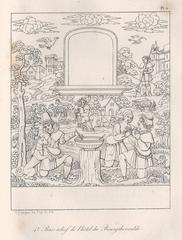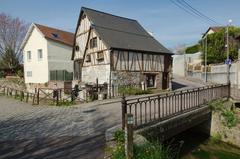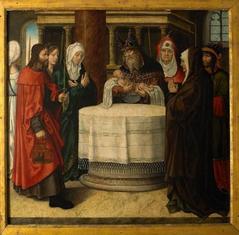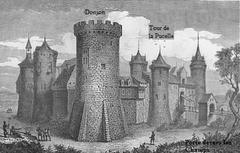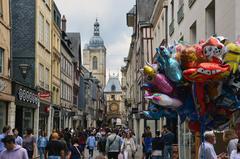
Gros Horloge Visiting Hours, Tickets, and Historical Sites in Rouen
Date: 03/07/2025
Introduction
The Gros Horloge, located in the heart of Rouen, France, is an emblematic Renaissance clock and one of the city’s most significant historical landmarks. Dating back to 1389, this astronomical clock is not only a marvel of medieval engineering, but also a symbol of Rouen’s civic pride, artistic heritage, and vibrant urban life. Whether you are a history enthusiast, art lover, or simply a curious traveler, the Gros Horloge offers an immersive exploration of Rouen’s rich past through its architecture, decorative details, and captivating stories. This guide covers everything you need to plan your visit, including opening hours, ticket information, accessibility, and nearby attractions.
For the latest updates and practical visitor information, consult the official Rouen Tourism website and the dedicated Gros Horloge information page.
Table of Contents
- Introduction
- Visiting Hours and Ticket Information
- Location and Access
- Historical Background and Architectural Overview
- The Astronomical Clock: Design and Symbolism
- Decorative Art and Sculptures
- Visitor Experience: The Tour
- Accessibility and Facilities
- Special Events and Educational Value
- Practical Tips for Visitors
- Nearby Attractions
- Frequently Asked Questions (FAQ)
- Visuals and Media
- Conclusion and Call to Action
- References
Visiting Hours and Ticket Information
- Opening Times: Open daily except Mondays, typically from 10:00 AM to 6:00 PM, with last admission 30 minutes before closing. Hours may vary during holidays or special events; always check the official Gros Horloge page for current times.
- Tickets: Adult tickets are around €8, with discounts for students, seniors, and families. Children under 6 enter free. Tickets can be purchased on-site or online. The Gros-Horloge Pass allows free re-entry for one year, and each full-priced ticket grants a half-priced entry to the Musée de l’Horlogerie de Saint-Nicolas d’Aliermont (rouen.fr).
- Payment Methods: Bank cards, cash, cheques, holiday vouchers, and travel agency vouchers are accepted.
- Lockers: Available for visitor use.
Location and Access
- Address: Rue du Gros-Horloge, 76000 Rouen, France.
- By Train: 10-minute walk from Rouen’s main railway station, which is served by regular TER trains from Paris, Caen, and Le Havre (Normandie Lovers).
- By Public Transport: Metro stop “Palais de Justice” and several bus stops nearby (“Cathédrale” and “Théâtre des Arts”).
- By Bicycle: City bike rentals (Cy’Clic) and bike parking available near Place du Vieux Marché and Palais de Justice.
- By Car: As Rue du Gros-Horloge is pedestrianized, park in city center lots such as Parking de la Pucelle, Parking des Carmes, or Parking Bouvreuil (Normandie Lovers).
Historical Background and Architectural Overview
Origins and Development
Commissioned in 1389, the original clock mechanism was installed in a Gothic belfry. This clock not only regulated city life but also played a civic role by marking key events and hours for Rouen’s community.
Renaissance Transformation
In 1529, a magnificent Renaissance arch was constructed over Rue du Gros-Horloge to house the clock. The arch’s elaborate decorations, including golden sun motifs and allegorical sculptures, embody Rouen’s transition from medieval to Renaissance artistry.
Architectural Highlights
- The Archway: A Renaissance structure adorned with intricate reliefs and the city’s emblematic lamb, symbolizing Rouen’s wool trade and Christian heritage.
- The Belfry: A late 14th-century Gothic tower, originally a watchtower and bell tower, standing 46 meters tall and featuring pointed arches, gargoyles, and pinnacles (Normandy Tourism).
- The Clock Pavilion: Houses the clock’s mechanism and richly decorated dial.
The Astronomical Clock: Design and Symbolism
- Mechanism: One of the oldest operational clocks in Europe, its original 1389 movement is preserved alongside modern updates.
- Clock Face: Installed in 1529, the single-handed dial is surrounded by 24 golden rays against a blue sky with stars, representing the heavens. Above the dial is a lunar phase globe, and below, a deity on a chariot denotes the day of the week.
- Symbolism: The golden lamb on the hand references the city’s wool trade and purity. Allegorical carvings represent virtues and planetary gods, illustrating the Renaissance’s fusion of art and astronomy (Rouen Tourism).
Decorative Art and Sculptures
- Allegorical Figures: Each day of the week is depicted with its planetary deity, such as the Moon for Monday and Saturn for Saturday.
- Heraldic Symbols: The lamb motif and Paschal Lamb from Rouen’s coat of arms are integrated throughout the structure.
- Fountain: At the arch’s end is a Louis XV fountain representing the myth of Alpheus and Arethusa, adding classical charm (Rehlat).
Visitor Experience: The Tour
- Audio Guides: Multilingual audio tours (French, English, Spanish, Italian, German, Dutch, Japanese, Russian) provide a 35–40 minute exploration of the monument’s history and mechanics (rouen.fr).
- Family Tour: Special “Alice in Wonderland” themed audio tour for children ages 6–12.
- Clockmaker’s Workshop: Displays original tools, blueprints, and clock components.
- Belfry and Mechanism Room: Climb the spiral staircase to see the preserved 14th-century movement and city bells, including “La Rouvel” from 1447.
- Panoramic Terrace: The ascent culminates in sweeping views of Rouen’s rooftops and cathedral.
Accessibility and Facilities
- Mobility: The main tour involves stairs and narrow passages and is not accessible to visitors with reduced mobility. However, an accessible film about the monument is available in the shop area (rouen.fr).
- Visual Impairment: Braille and large print guides can be requested at reception.
- Restrooms: Available on-site.
- Shop: The boutique offers souvenirs, guidebooks, DVDs, and a commemorative “Monnaie de Paris” coin.
Special Events and Educational Value
- Events: The Gros Horloge hosts occasional special events, especially during local festivals and heritage days. Check the official site for updates.
- Educational Programs: Audio guides and panels provide insights into timekeeping, architecture, and symbolism. Children’s workshops, such as “Émile le petit mouton,” introduce young visitors to the monument’s heritage using storytelling and activities (rouen.fr).
Practical Tips for Visitors
- Best Time to Visit: Spring and summer offer optimal weather and lighting. Early morning or late afternoon visits are quieter.
- Duration: Allocate 45–60 minutes for a comprehensive visit.
- Photography: Non-flash photography is permitted. The Rue du Gros-Horloge and the belfry terrace provide excellent photo opportunities.
- Dining and Accommodation: The surrounding medieval quarter offers numerous cafés, restaurants, and hotels within walking distance (Normandie Lovers).
- Combined Visits: Pair your experience with Rouen Cathedral, Palais de Justice, or Musée des Beaux-Arts (The Crazy Tourist).
Nearby Attractions
- Rouen Cathedral: A masterpiece of Gothic architecture and inspiration for Monet’s paintings (Rouen Cathedral Information).
- Place du Vieux Marché: Historic square, site of Joan of Arc’s martyrdom.
- Musée des Beaux-Arts: Renowned for its European art collection.
- Palais de Justice: Imposing Gothic courthouse nearby.
Frequently Asked Questions (FAQ)
Q: What are the Gros Horloge visiting hours?
A: Typically 10:00 AM to 6:00 PM daily except Mondays; always check the official site for updates.
Q: How much are tickets?
A: Around €8 for adults; discounts available for children, students, and seniors.
Q: Is the Gros Horloge accessible for visitors with reduced mobility?
A: The main tour is not accessible, but an accessible film is available in the shop.
Q: Are guided tours available?
A: No in-person guides, but comprehensive multilingual audio guides are offered.
Q: Can the visit be combined with other Rouen attractions?
A: Yes, many sites are within easy walking distance.
Visuals and Media
Explore high-quality images and virtual tours of the Gros Horloge, including the clock face, the Renaissance arch, the mechanism room, and panoramic views from the belfry. Interactive maps are available on the official tourism site.
Conclusion and Call to Action
The Gros Horloge is more than a historic timepiece; it’s a living symbol of Rouen’s civic identity, Renaissance artistry, and communal spirit. Whether you’re climbing its belfry, admiring its ornate façade, or exploring nearby attractions, a visit to the Gros Horloge is an essential part of discovering Normandy’s heritage.
Plan your visit today by checking the latest details on the official Gros Horloge page. For a richer experience, download the Audiala app for personalized audio tours and exclusive travel tips, and follow us on social media for more inspiration.
References and Further Reading
- Gros Horloge Visiting Hours, Tickets, and History: A Complete Guide to Rouen’s Iconic Clock, 2025, Rouen Tourism
- Gros Horloge in Rouen: Visiting Hours, Tickets, and Historical Significance, 2025, Rouen Official Site
- Gros Horloge Architectural Overview and Astronomical Clock Details, 2025, Normandy Tourism
- Visitor Experience and Practical Information for Gros-Horloge: Visiting Hours, Tickets, and More, 2025, Normandie Lovers
- The Splendor of Historical Houses in Rouen Rue du Gros-Horloge, 2025, Tourist Platform
- Discover Rouen: A Journey Through History and Culture, 2025, Les Trois Fenêtres



